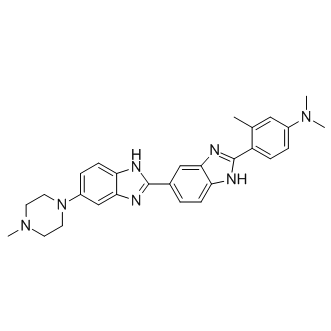| DC47250 |
Nonanal
|
Nonanal is a saturated fatty aldehyde with antidiarrhoeal activity. |
| DC47249 |
Piperitone
|
Piperitone is as a powerful repellent and antiappetent agent. Piperitone is very toxic to Cymbopogon schoenanthus (C. schoenanthus) adults, newly laid eggs and to neonate larvae. Insecticidal activity. |
| DC47247 |
Tyrosylleucine TFA
|
Tyrosylleucine (Tyr-Leu, YL) TFA, an orally active dipeptide, exhibits a potent antidepressant-like activity. |
| DC47243 |
Dehydroglyasperin C
|
Dehydroglyasperin C, a isoflavone, is a potent NAD(P)H:oxidoquinone reductase (NQO1) and phase 2 enzyme inducer. Dehydroglyasperin C has antioxidant, neuroprotective, cancer chemopreventive, and anti-inflammatory activities. |
| DC47227 |
(−)-Myrtenal
|
(−)-Myrtenal ((1R)-(−)-Myrtenal) is an orally active terpene with antitumour activity. (−)-Myrtenal ameliorates hyperglycemia by enhancing GLUT2 through Akt in the skeletal muscle and liver of diabetic rats. |
| DC47224 |
GPX4-IN-3
|
GPX4-IN-3 (26a) is a potent glutathione peroxidase 4 (GPX4) inhibitor as a selective ferroptosis inducer. GPX4-IN-3 (26a) exhibits 71.7% inhibition for GPX4 with 1 μM. |
| DC47179 |
Tyrosylleucine
|
Tyrosylleucine (Tyr-Leu, YL), an orally active dipeptide, exhibits a potent antidepressant-like activity. |
| DC47178 |
Mead acid
|
Mead acid (5,8,11-Eicosatrienoic acid), an unsaturated (Omega-9) fatty acid, is an indicator of essential fatty acid deficiency. |
| DC47140 |
Yadanzioside K
|
Yadanzioside K is a natural quassinoid glucoside found in Brucea amarissima. |
| DC47105 |
Complanatoside B
|
Complanatoside B is a P. chinense Fisch flavonoid with potential anti-inflammatory effects. |






















